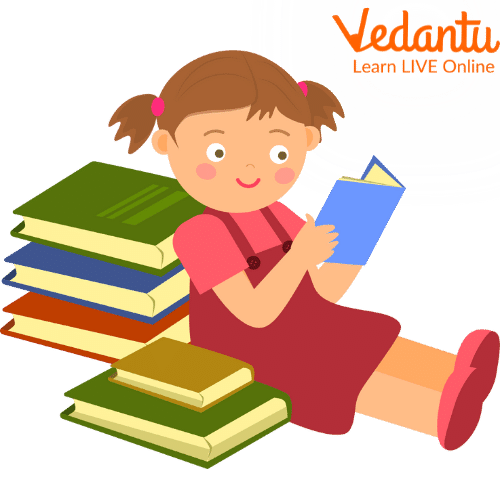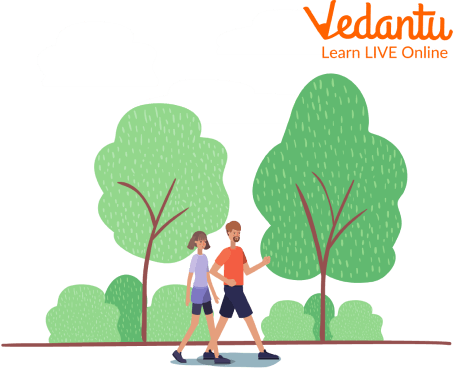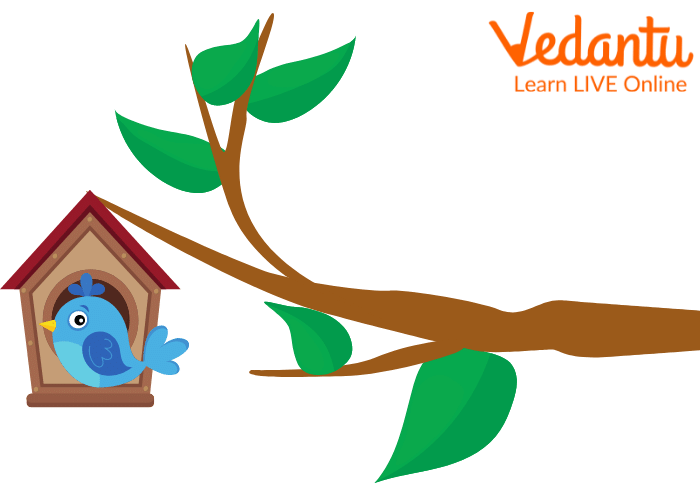




Introduction to Comprehension for Class 1
Word comprehension means the ability to understand what you listen to or what you read. It is an activity that targets improving or testing one's ability to understand a language. Try to recollect your English class at your school. Every day you were shown new lessons. The stories, the poem, the questions, and the answers were unseen to you before you listened or read them.
Similarly, in a comprehension test, you are given a passage or a paragraph and you need to answer them after reading. These paragraphs show the thought or state of mind concerning issues and the author's answers. Your main task is to respond to the questions asked in the passage. Thus, Picture comprehension for class 1 helps in understanding the meaning of a text, story, or picture.

Kid Reading Stories
Reading Comprehension for Class 1
Picture comprehension is an important skill to develop because it requires understanding how to take in written and verbal messages and comprehend them, which is vital for grades at school and everyday life. Reading comprehension is important for people from all walks of life. Comprehension skills can be improved through practice and effort.
A Spring Walk

A Family Taking a Spring Walk
It had been a long winter. When spring came, Ben was so eager to go outside. He went for a walk in the forest with his mother. He smelled the fresh air. He saw many little critters like child rabbits, deer, and butterflies. Then, Ben saw some flowers. He picked the flowers and hid them. Ben shouted, "Surprise!" He gave the blossoms to his mother. Ben's mother smiled!
Comprehension Worksheets for Class 1
1. Why was Ben eager to go outside?
2. What did Ben find in the forest?
3. How would you think Ben's mother felt at the end of the story? How do you know?
4. Is A Spring Walk fiction or nonfiction?
Answers
1. Ben was eager to go outside because he liked spring and wanted to go for a walk in the forest.
2. He found little critters like child rabbits, deer, and butterflies.
3. Ben’s mother was happy, as she smiled when Ben gave flowers to his mother.
4. A Spring Walk is nonfiction.
Jack's Birdhouse

Jack’s Birdhouse
Jack wants to build a birdhouse.
He gets some wood.
He gets a few nails
Also, paint.
His mother helps as well.
She gets a saw and a sled.
She gets a pencil and ruler.
Jack draws his birdhouse. They build it together.
After that, they hang it up on a tree.
A bird goes into the birdhouse.
A second bird goes in. A third bird goes in.
A fourth bird goes in!
Jack and his mother take a look at one another.
They need a bigger birdhouse!
Comprehension Worksheets for Class 1
1. What does Jack want to build?
2. Who helps him?
3. Where did he put the birdhouse when it was completed?
4. Write three things that Jack used to make his birdhouse.
Answers:
1. Jack wants to build a birdhouse.
2. His mother helps him build a birdhouse.
3. They hang it up on a tree after it is completed.
4. He brought wood, nails, and paint to build the birdhouse.
The White House

The White House
The President of the United States of America lives in Washington, DC. His address is 1600 Pennsylvania Avenue or The White House.
What's more, indeed, it's a big white building. There are 6 floors in the White House - 2 floors for workplaces and guests, 2 floors for the President and his family, and 2 basements. There are 132 rooms, 35 restrooms, and 3 lifts in the White House. There are 412 entryways and 147 windows. There's also a pool, an exercise center, and a cinema, and there are beautiful gardens all around the building.
Lots of individuals work at the White House. The President's office is known as 'The Oval Office. It's a round office without corners! Around 6,000 individuals visit the White House every day. That is around 2,000,000 people per year!
Comprehension Worksheets for Class 1
1. What is the President's address?
2. How many floors can guests visit?
3. How many rooms are there in the White House?
4. Is there a pool in the White House?
5. What's the President's office called?
6. How many people visit the White House every day?
Answers:
1. His address is 1600 Pennsylvania Avenue or The White House.
2. Guests can visit 2 floors.
3. There are 132 rooms in the White House.
4. Yes. There is a pool in the White House.
5. The President's office is known as 'The Oval Office.’
6. Around 6,000 individuals visit the White House every day.
Summary
In this article, we read comprehension with their questions which will have surely given you a whole new experience about reading passages. Reading these carefully, you will be able to answer the questions given with each comprehension passage. Reading comprehension passages is a great way to enhance your reading abilities. These passages gauge your reading skills, vocabulary, and ability to take the whole passage together. It is great for learners who want to improve their reading skills and test their ability to analyse a composition.
FAQs on Comprehension for Class 1: Improve Reading Skills
1. How do comprehensions help in improving a child’s skills?
Learning comprehension skills is an important part of a child's elementary education. From this earlier age, children can begin to apply their reading and language comprehension skills to what they see. This can help them understand texts in the future, as well as develop their sight vocabulary.
2. What is reading comprehension?
Reading comprehension is the ability to understand a written piece of text, whether fiction or nonfiction. The ability to comprehend depends on one's knowledge of the subject matter, vocabulary, and other skills that are required to interpret what one reads.
3. What is the difference between comprehension and summary?
Comprehension is essentially a reading process that examines each word in a passage and makes an attempt to understand the content of the passage concerning the overall topic that it is covering, and a summary is information about a topic provided.









